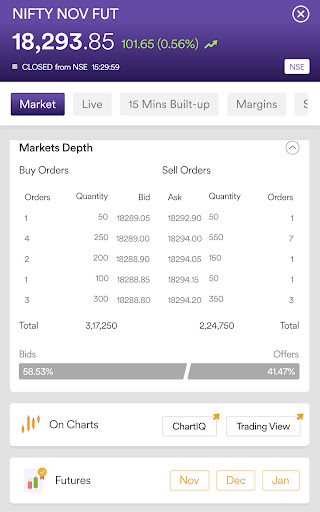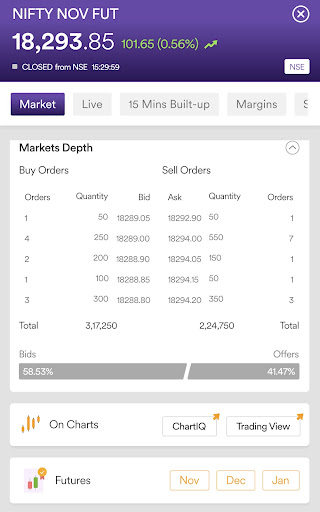Chapter 11: How to Choose the Right Underlying for Futures
After you’ve established a view, bullish or bearish – it’s time to design a trading plan and choose the right financial instruments to be able to execute a trade. In this chapter we will walk you through how to develop a trading plan and then how to choose stocks for futures trading.
Step 2 – Developing a Trading Plan
As a futures trader, its good to have a trading plan before even thinking about trading. A trading plan can help you have a disciplined approach to speculating.
A trading plan is a detailed Plan of Action which defines a trader’s DNA and supports a trader through thick and thin throughout the journey of futures trading.
Consider a trading plan as a framework under which a trader designs his trading process and establishes certain ground rules and defines all the possible risk and reward for trading.
A trading plan for a trader should have the 4 “S” as a framework. This framework can work not only for futures trading but for all types of trading.
1. Structure
A trading plan for futures trading should be drafted in a way that explains the entire process of trading, right from how to choose a stock for futures trading to executing a trade. This also includes defining the entry and exit points and set targets and stop losses.
A. Study
Personal research using tools like fundamental or technical analysis or even observations backed by data crunching can help you develop and validate your conviction in the trading setup.
A study refers to an in-depth analysis of the underlying asset with respect to identifying overall trends in the sector/industry.
It also extends to analysing macroeconomic factors and its impact on the price movements in the futures contract with changes in the demand and supply of the underlying asset and any other aspect which needs some research.
This research can immensely benefit the selection of stocks , commodities or any other underlying asset for trading.
2. Strategy
Well after you have figured out your Structure and are done with your study , the next step is identifying a trading strategy that may work the best for you. There may be a thousand different strategies that may be making money.
But to become a successful and profitable trader, you must identify the strategy that suits your trading DNA. In order to identify a successful strategy, a trader must understand when the strategy works and when it doesn’t.
Holding period of a contract is yet another crucial factor that helps in choosing the right financial instrument (future contracts) since its important to define a measured holding period in order to choose the right contract in futures trading.
A strategy has 5 main parts to it.
- Timing: When a given strategy works and when it doesn't.
- Choice: Choosing the right contract for your expected holding period.
- Plan of Action: How to execute trades while implementing a strategy.
- Defining Risk-Reward: Understanding the potential P&L post-execution.
- Backtesting: To define the success rate of a strategy.
Pointer
You should choose a strategy that is best for you and suits your trading style, and is a best fit in your structure, Most importantly, it must designed by yourself. Blindly following someone else’s strategy could be a disaster.
3. Spectacular Execution
After doing all the hard work of designing a structure, in-depth study and analysis and then identifying the best strategy that works for you, all you need to do is master the art of execution.
It is preferable to have a plan for execution before you start trading while developing your trading plan.
The execution plan may consist of the selection of financial instruments for trading, choosing a broker/platform for trading, identifying capital adequacy and estimating margin requirements for deploying your strategies.
Now we know how to make a trading plan the next step is to know how to choose stocks for futures trading and the same logic can be applied to selecting various other underlying assets, commodities and currencies for futures trading.
Step 3: Choosing the right instrument for trading.
You have learnt how to develop biases for assets or commodities and also learnt how to develop a trading plan. The next move is the select the right instrument for trading futures in any asset class you decide to trade.
Consider financial instruments as tools for trading and a trader needs to understand which instrument has to be chosen to trade based on various parameters like the holding period of the trade, risk tolerance ability of a trader, capital adequacy for margin requirements and mtm settlement, for a trader to execute/deploy a strategy.
Once these parameters are fulfilled, it becomes much easier to choose the right instrument for trading.
Let’s get back to Mr Nivesh’s example from chapter 2 which will help you decide how to choose the right financial instrument for trading. Mr Nivesh was bullish on the company Reliance Ltd had 2 choices.
Choice 1
He could buy shares of Reliance listed on the Exchange in the cash markets, worth 10 lakh.
Choice 2
He could buy Reliance futures from the futures market just by fulfilling the margin requirements.
How could he decide which financial instrument cash or derivatives was a good choice for him. Here are some parameters Mr Nivesh must have considered.
If he chooses option 1, he gets the shares credited to him in his demat and he has the flexibility that he can hold the shares for a longer period and sell them whenever his target is achieved.
But if he chooses option 2, no doubt his returns will be maximized but his risk also increases since he is taking a leveraged position and has to manage his capital adequacy for any margin calls if the prices start falling.
Since the futures will expire at the end of the month, he has to either close his position or roll over which can be complicated for him to manage.
As long as Mr Nivesh is aware and is willing to accept the fact that taking a trade in futures is a high-risk high return trade, he should definitely go for choice no 2.
But if Mr Nivesh is risk-averse and is willing to hold the stock beyond the holding period decided by him if things go south, then taking a position in cash markets is a better choice for him.
While choosing the financial instruments a trader also has to make sure that the right asset class is selected while taking the trade. Since an exchange has thousands of stocks listed, chances of error are much higher during execution.
Once a trader has decided on the financial instrument that is to be traded, there are multiple ways to find a price quote for trading.
The best is to find quotes and probably the easiest is to look on a broker’s app which displays everything such as contracts price quotes (bid and ask, day high day low, OHLC, volumes, OI, margins, etc) in a single quote window within the same app.

All a trader has to do is to make sure that the right instrument symbol is selected while the order is being punched online.
If online trading is not for you, some brokers also offer traders services wherein they can also call the brokers office and can place the trade on traders behalf on their platforms which connect to the exchanges.
